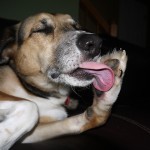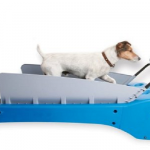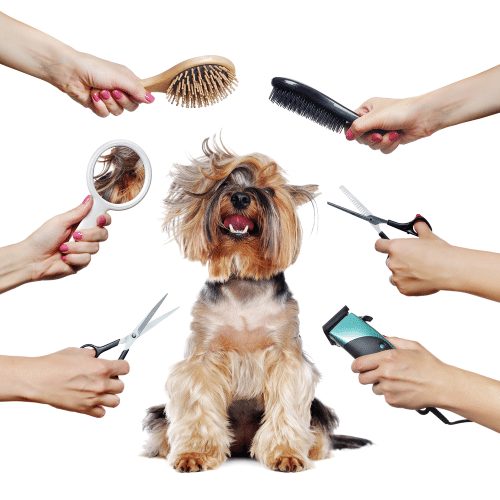With busy schedules keeping us on the go, dog grooming often gets pushed aside for other commitments. However, proper pooch hair care is crucial — not just to keep your dog looking good, but also to ensure he’s in good pet health. “Dogs, like humans, feel better when they are clean and healthy,” says Alicia Seguin, a groomer at 2 PAWS UP in Cranston, R.I.
Whether you’re grooming your dog on your own or taking him to a professional, remember the importance of proper brushing and combing. Dog grooming spreads skin oils throughout the coat, resulting in fewer tangles and mats, which can be painful and can injure the skin. Grooming also provides the opportunity to spot any problems sooner rather than later, including skin irritations, fleas, ticks, unusual lumps, or hernias. Even more, it’s a great way to bond and show affection.
Is It Time for Your Dog to Get a Haircut?
When is a dog haircut necessary? It’s not always as clear as it is with people, although some breeds have their own look and style — with some grown long and some clipped short.
Regularity of haircuts for your dog “varies with the breed and with the owner’s preference,” says Susan Wright, BVSc (Hons), a staff veterinarian at Dog Fence DIY LLC in Dallas. “If your dog is a show dog, you may need to have it done every month or two to keep his coat clipped to the breed standard. If you’re not too concerned about appearance, you can leave it longer between haircuts.”
The Scoop on Hair Length
Many pet owners feel sorry for their long-haired dogs in the heat of the summer. Veterinarians, however, are mixed on the subject. Some believe that, as long as animals are given shade, plenty of water, and not too much exercise in the heat, they will be just fine — in fact, their coats may insulate them against the heat and protect them from sunburn.
Historically, long-haired dog breeds did not evolve in hot countries, so some vets feel that it’s better to trim dogs’ hair; they seem happier with less fur in the summer. Keep in mind — there aren’t many health risks involved with trimming a dog’s fur, but some animals’ hair may never grow back the same.
What about dog haircuts in the winter? Some pet owners worry this leaves their pets more exposed to harsh winter elements. Turns out, they’re right. A dog’s hair traps air and helps insulate her from the cold, so the only real reason to give your dog a winter haircut is if she has mats that can’t be combed out. However, if you think your pooch is in dire need of a trim, short hair should be fine — as long as she is not left outside for unreasonable amounts of time. Owners should pay particular attention to older dogs who, like people, can get cold more easily and therefore should keep longer coats when possible.
Brushing and Combing Your Dog: A How-To
A few tips can make dog grooming easier, including having the right equipment and using the proper technique.
Dr. Wright recommends choosing a brush that’s appropriate for the dog’s coat type and length. Begin at the front end of your dog and work toward the back to make sure all areas are groomed. Any tangles should be teased out with a comb while the hair is held at skin level to prevent hurting the pet. Depending on the breed, some dogs need brushing daily; others rarely need it, if ever.
Grooming goes beyond coat care. Keeping nails properly trimmed is another important aspect for healthy pets. This can be done at home with the right kind of clippers. Clipping your dog’s nails every month is ideal for preventing long nails that can split, break, or tear. Nails should be cut just above the quick (the pink in the nail).
And don’t forget the rest of your pooch. “Brush the dog’s teeth daily, clean around the eyes as needed to avoid matting of fur or skin irritation, and clean the ears,” says Joanne Gaines, DVM, owner and veterinarian at Ridgeview Animal Hospital in Omaha, Neb.
Dog grooming takes a little bit of work (or the expense of a professional groomer) — but, in the long run, proper care leads to a happy and healthy pet.











